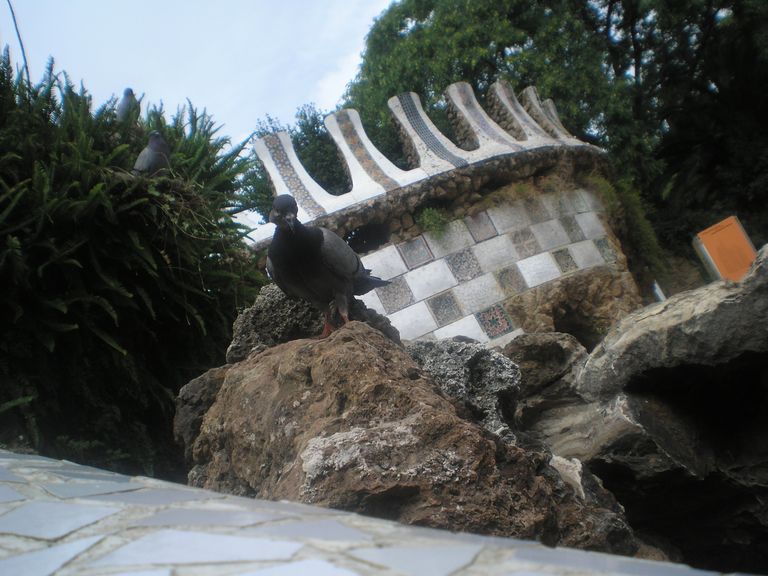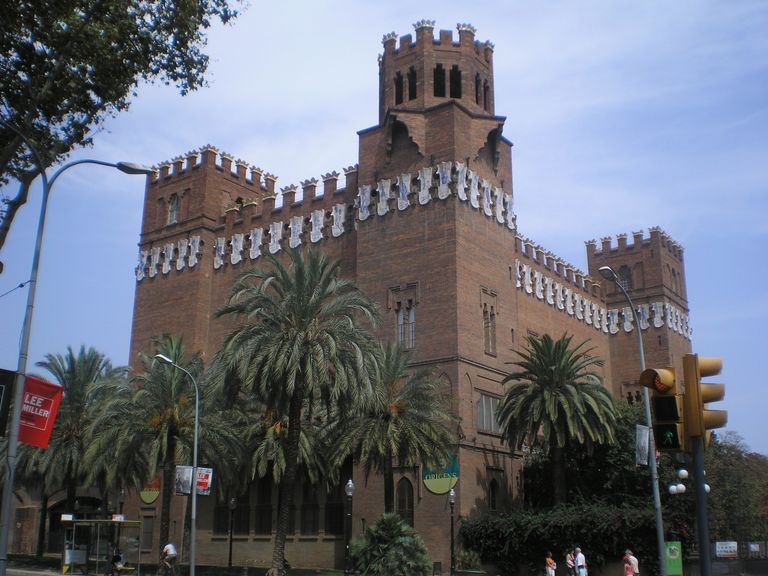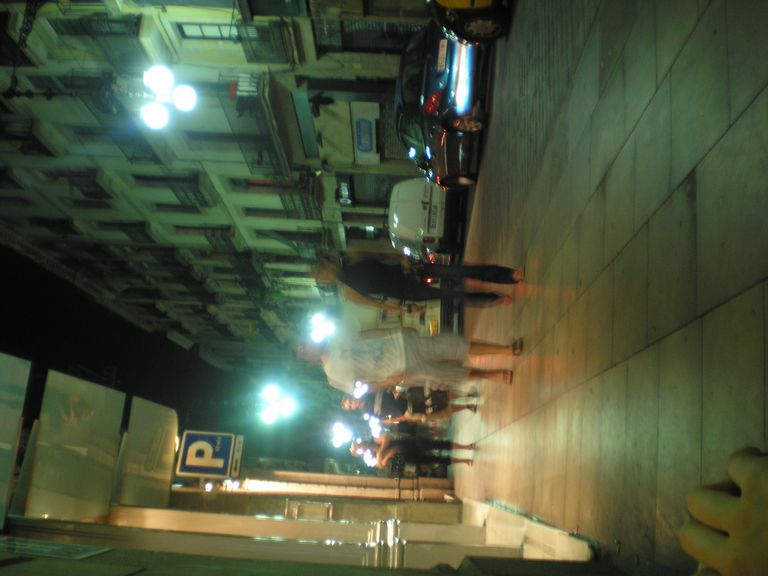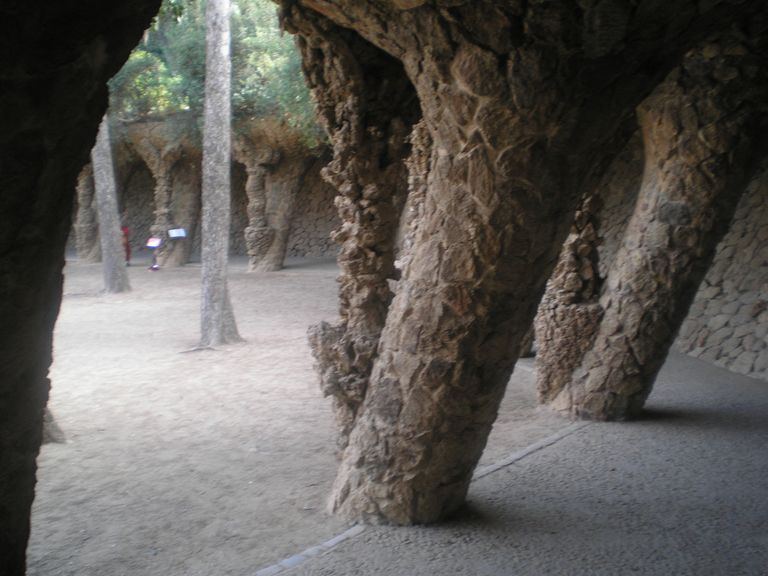
If there are artistic aspects that have given rise to numerous controversies in recent times, it is the definition of art itself.

Traditional, modern, contemporary, urban art. Are they different branches of art or has it been transformed into an elitist and marketing definition to try to make an economic profit from each one?

Until not so many years ago - I remember when the writer of this post was a child, just a young man making his first contacts with literature in general - the word art was identified with real artistic "monsters", the pronunciation of whose name provoked respect and admiration, but - above all - the identification of the object we were talking about.

Si hay aspectos artísticos que han dado lugar a numerosas controversias en los últimos tiempos es a la definición del arte en si mismo.

Arte tradicional, moderno, contemporáneo, urbano. Son distintas ramas del arte o se ha transformado en una definición elitista y de marketing para tratar de sacar provecho económico a cada una?
Hasta hace no muchos años -recuerdo cuando quien escribe este post era pequeño, apenas un joven que hacía sus primerosm contactos con la literatura en general, la palabra arte estaba identificada con verdaderos "monstruos" artísticos la pronunciación de cuyo nombre provocaba respecto y admiración, pero -por sobre todas las cosas- la identificación del objeto de que hablábamos.

I will try to explain myself better with an example. After the second half of the last century (especially in the years 1960-1970), if we spoke of Leonardo - with the name alone, since it was not even necessary to add "Da Vinci" - we were referring to sculptures and paintings of genius at the height of the European Renaissance, especially La Monalisa, one of the works of art most widely disseminated at the level of universal knowledge. Whereas if we mentioned Picasso we were referring to painting par excellence, a Picasso was synonymous with a painting even in that sector of the public whose artistic knowledge was limited.

Until that time the concept of modern or contemporary art was very deleterious and I remember that one of its main exponents (first criticised and then acclaimed) was Andy Wharol. At the same time, artists began to emerge who began to work with wood, metals, plastic and even nature itself in its virgin state - it is enough to go to Val di Sella in Borgo Valsugana, Trentino, Italy to admire these works - giving rise to innumerable excellent works that were difficult to categorise in the strict and traditional sense that had been given to the word art until then.

Some years later, the so-called urban art exploded with the murals painted over large areas and with works in different materials that today are the symbol of many cities in the world and their incorporation into the so-called modern and contemporary art.

Trataré de explicarme mejor con un ejemplo. Después de la segunda mitad del siglo pasado (especialmente en los años 1960-1970) si hablábamos de Leonardo -asi solo con el nombre ya que no era ni siquiera necesario agregar "Da Vinci"- nos referíamos a esculturas y pinturas geniales en el auge del Renacimiento europeo specialmente La Monalisa una de las obras de arte mas divulgadas a nivel de conocimiento universal. Mientras que si mencionábamos a Picasso hacíamos referencia a la pintura por excelencia, un Picasso era sinónimo de cuadro incluso en ese sector del público cuyos conocimientos artísticos eran limitados.

Hasta ese momento el concepto de arte moderno o contemporáneo era muy deletéreo y recuerdo que uno de sus principales exponentes (primero criticado y luego aclamado) fue Andy Wharol. Contemporáneamente comenzaron a surgir artistas que comenzaron a trabajar la madera, los metales, la plástica e incluso la naturaleza misma en su estado virgen -es suficiente ir a Val di Sella enBorgo Valsugana, Trentino, Italia para admirar estos trabajos- dando origen a innumerables y excelentes obras que resultaban difícil catalogarlas en el sentido estricto y tradicional que se venía dando a la palabra arte hasta entonces.

Algunos años más tarde explota el llamado arte urbano con los murales pintados sobre grandes extensiones y con obras en materiales diversos que hoy son el símbolo de muchas ciudades del mundo y su incorporación al llamado arte moderno y contemeporáneo.

I have already dealt with these themes in these posts with classical and urban art in Berlin and Barcelona, two cities I have often visited, and also in Buenos Aires, the metropolis of my native country, which I have seen again - somewhat changed - after many years.

If there is one thing that characterises modern art, it is the abstract. Traditional art (and in this case I am referring to paintings and sculpture in particular) was almost always based on close-ups, landscapes and the human figure represented almost always by high dignitaries who commissioned these portraits to sculptors and court painters to decorate their salons and give an idea of their authority and political and economic power).

Abstract art - of which Joan Miro's "La Leçon de Ski" in 1966 is one of the earliest examples - changes this attitude of the artist to reflect in the work what he thinks and not what others see. Jackson Pollock is perhaps the most famous member of this group.

Me he ya ocupado de estos temas ya en estos posts con el arte clásico y urbano en Berlín y Barcelona dos ciudades que he visitado a menudo y también en Buenos Aires, metrópolis de mi país natal que he vuelto a ver -algo cambiada-después de muchos años.

Si hay algo que caracteriza el arte moderno es lo abstracto. El arte tradicional (y en este caso me refiero a las pinturas y escultura en particular) se basaba casi siempre en los primeros planos, en los paisajes y en la figura humana representada casi siempre por altos dignatarios que comisionaban estos retratos a los escultores y pin tores de corte para adornar sus salones y dar una idea de su autoridad y poderío político y económico).

El arte abstracto -del cuál "La Leçon de Ski" de Joan Miro en 1966 es uno de sus prrimeros ejemplos cambia esta actitud del artista para reflejar en la obra lo que él piensa y no lo que ven los demás. Jackson Pollock es quizás el miembro más famoso de este grupo.

But these changes have also been applied to architecture. For many years we have associated great buildings and monuments with a gothic, classical, neoclassical style until the advent of modern architecture, which contrasts with the previous ones with a more refined, "cleaner" design, with simple and straight lines, establishing a clear and distinct break with neoclassicism and eliminating ornaments in favour of functionality.

This is how avant-garde or futurist architecture was born, combining simpler styles with other building materials such as zinc, steel, glass and, of course, iron and concrete for the structures, often visible from the outside.

The confusion on the subject is due, in my humble opinion, to the enormous variety of artistic currents that have emerged in the last century and to the fact that we are still living in contemporary art, so defining the time frame with certainty is complex. Much more so the artistic styles.

Pero también estos cambios se han aplicado a la arquitectura. Durante muchos años hemos asociado los grandes edificios y monumentos a un estilo gótico, clásico, neoclásico hasta el advenimiento de la arquitectura moderna que se contrapone a las anteriores por un diseño más depurado, "más limpio", de líneas simples y rectas, estableciendo una clara y neta ruptura con el neoclasicismo y eliminando ornamentos en beneficio de la funcionalidad.

Nace así la arquitectura de vanguardia o futurista uniendo a estilos más simples incluso otros materiales en la construcción como zinc, acero, cristal y por supuesto hierro y hormigón para las estructuras, muchas veces visibles desde el externo.

La confusión sobre el tema creo que se debe según mi modesto entender a la enorme variedad de corrientes artísticas que han surgido en el último siglo y al hecho de que aún vivimos en el arte contemporáneo, por lo que definir el marco temporal con certeza es complejo. Y mucho más los estilos artísticos.

We can make a simple comparison with the difference between two similar concepts: modern art and contemporary art, both of which involve new genres of artistic expression such as video, digital art or performance and installations, which have only been experienced since the second half of the 20th century.

On top of that, digital art with the tokenisation of digital works defined as "artistic" further increases the uncertainty about the definition of the word "art".

Can the same definition be applied to a painting by Raphael as to a digital design made with any advanced software? Is Milan's Duomo, a masterpiece of Gothic religious architecture, the third largest capital city in the world in terms of surface area, comparable to Antoni Gaudí's Sagrada Familia in Barcelona, the work of a revolutionary genius? Is Michelangelo's David comparable to Henry Moore's "Reclining Figure"?

Podemos hacer una simple comparación con la diferencia que existe entre dos conceptos similares: el arte moderno y el arte contemporáneo, ambos implican nuevos géneros de expresión artística como el vídeo, el arte digital o la performance y las instalaciones, que sólo se han experimentado desde la segunda mitad del siglo XX.

Por si fuera poco el arte digital con la tokenización de obras digitales definidas "artísticas" aumenta aún la incertidumbre sobre la definición de la palabra "arte".

Puede aplicarse la misma definición a una pintura de Rafael que a un diseño digital hecho con cualquier software de avanzada? Son comparables el Duomo de Milán obra maestra de la arquitectura religiosa gótica, tercera capital en el mundo por superficie, con la Sagrada Familia de Antoni Gaudí en Barcelona, obra de un genio revolucionario? Es comparable el David de Miguel Angel con el “Reclining Figure” de Henry Moore?

It is evident and notorious that creating very rigid barriers and clarifying what is contemporary art and what is modern art is not only not easy, but can also lead to the stigmatisation of certain artistic models, and many critics still disagree.

However, we can say with certainty that modern, futuristic, contemporary and, in a certain sense, alternative art is still in full swing today, and that it would be correct to refer to it only in terms of the artistic currents it represents by abstracting from the word "art" as a generic element.

It is a subject to be debated at length, with the prospect of bringing in some expert on the subject. For the moment this post reflects only the opinion of an art enthusiast.

See you next time!

Es evidente y notorio que crear barreras muy rígidas y aclarar qué es arte contemporáneo y qué es arte moderno no solo no es fácil, sino que además puede dar origen a estigmatizar ciertos modelos artísticos y muchos críticos siguen sin estar de acuerdo.

Sin embargo, podemos decir con certeza que el arte moderno, futurista, contemporáneo y, en cierto modo, alternativo sigue en pleno apogeo hoy en día, y que sería correcto referirse a él sólo en términos de las corrientes artísticas que representa haciendo abstracción de la palabra "arte" como un elemento genérico.

Es un tema para debatir ampliamente, con la perspectiva de incorporar algún experto en el tema. Por el momento ests post refleja solamente la opinión de un apasionado del arte.

Hasta la próxima!!










 >
>
Los enlaces de mis sitios web/Links to my websites :

Upvoted. Thank You for sending some of your rewards to @null. Read my last posts to make sure that BLURT burning is profitable for you. Before using this bot please make sure your account has at least 100 BP. Get more BLURT:
@ mariuszkarowski/how-to-get-automatic-upvote-from-my-accounts@ blurtbooster/blurt-booster-introduction-rules-and-guidelines-1699999662965@ nalexadre/blurt-nexus-creating-an-affiliate-account-1700008765859@ kryptodenno - win BLURT POWER delegationNote: This bot will not vote on AI-generated content
Thanks @ctime and curators!!